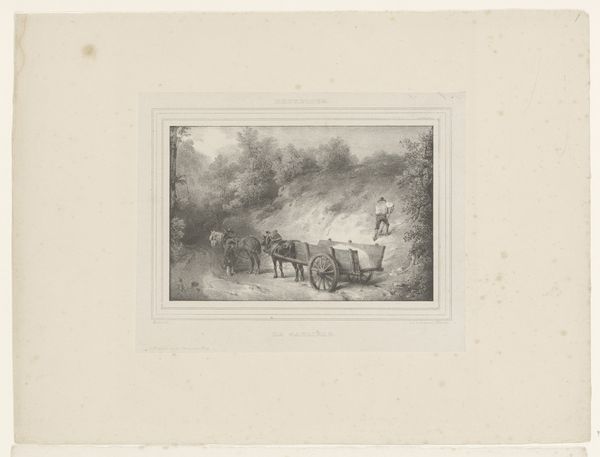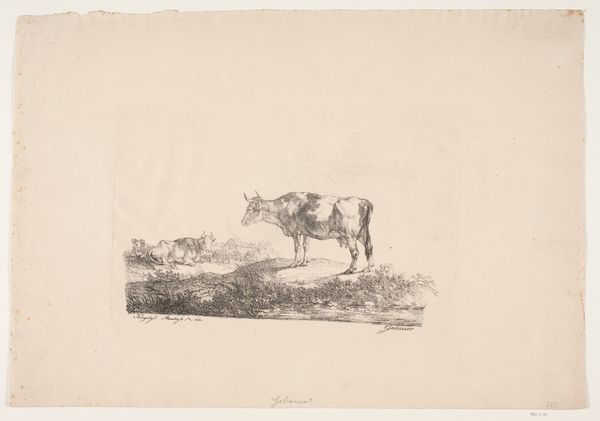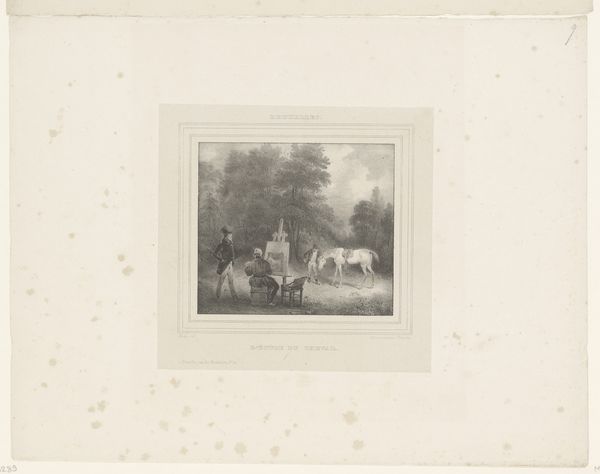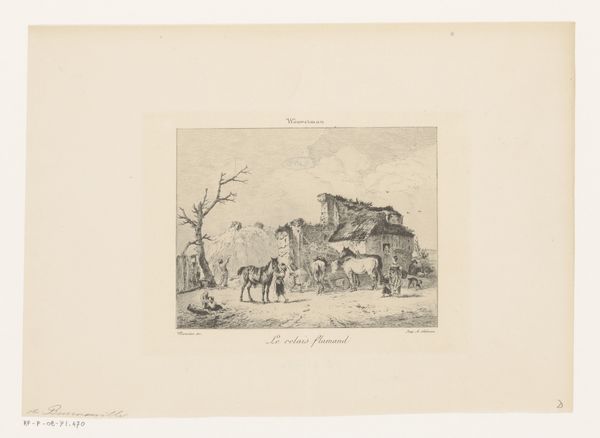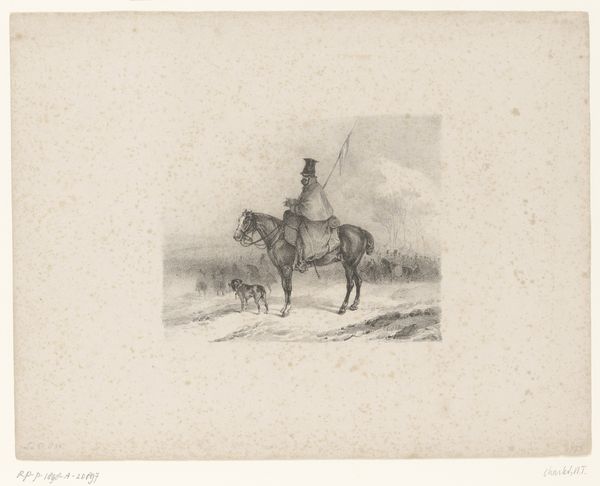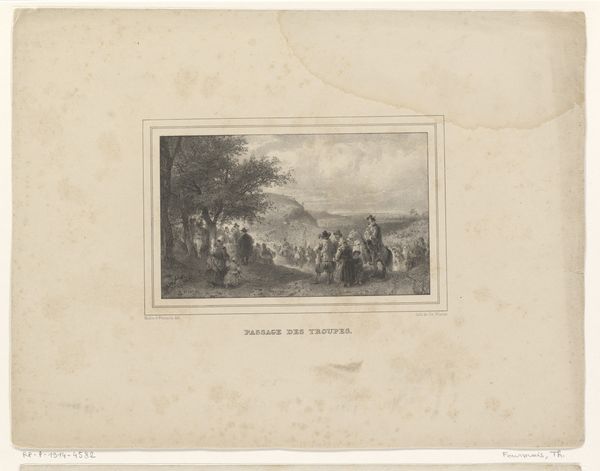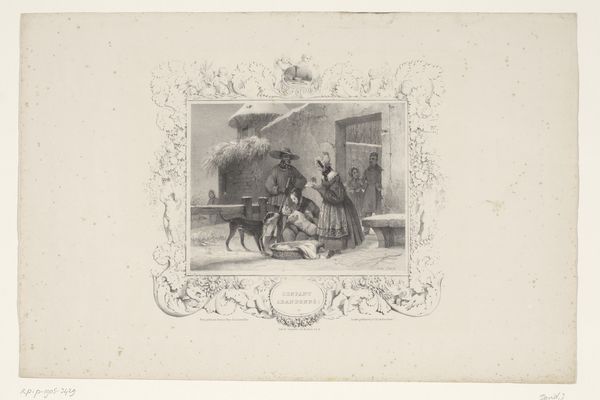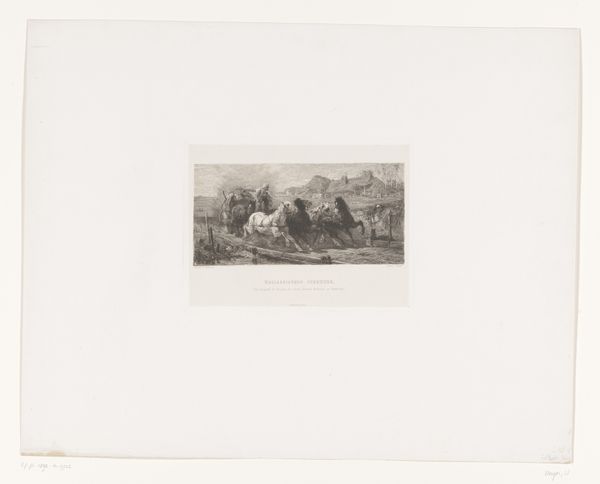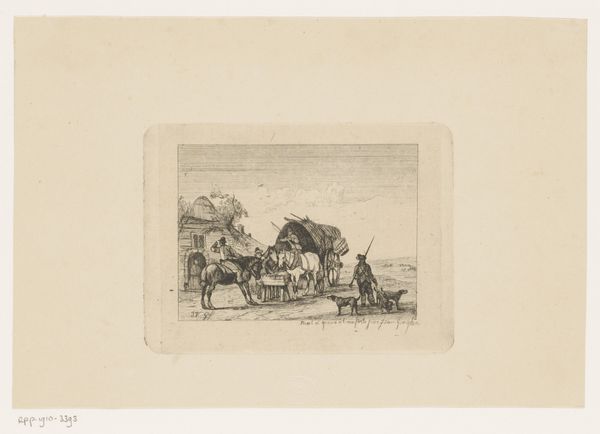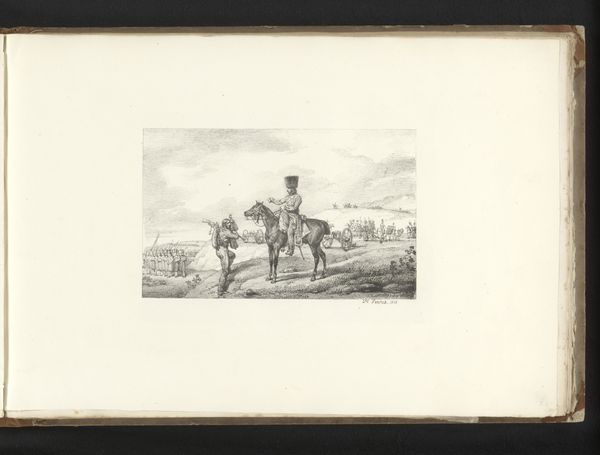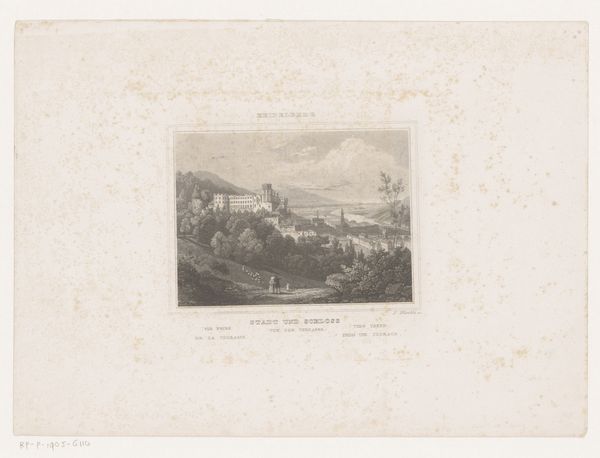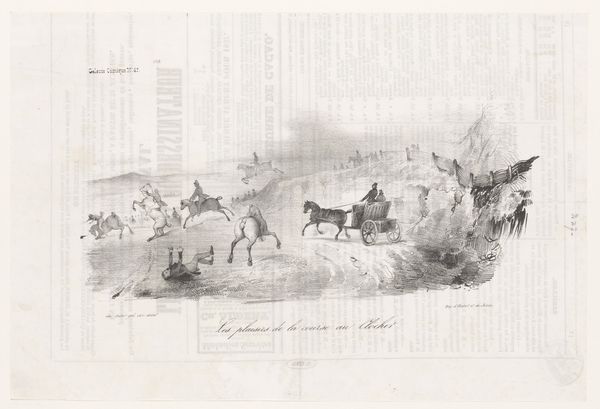
drawing, print, etching, pencil
#
drawing
#
snow
# print
#
etching
#
landscape
#
romanticism
#
pencil
#
genre-painting
Dimensions: height 271 mm, width 365 mm
Copyright: Rijks Museum: Open Domain
Editor: This is "Man with Donkey in the Snow," a print by Jean-Baptiste Madou from around 1831, created using etching and pencil. The scene feels quite bleak – just a man and his donkey trudging through heavy snow. What do you see in this piece? Curator: Immediately, I'm drawn to the materiality and the process. It's not just a romanticized view of the landscape; it's about the labor etched into the very lines of the print. Think about the physical effort involved in both the man's journey and the artist's meticulous work with the etching tools. How does the stark monochrome contribute to that feeling? Editor: It definitely emphasizes the harshness, making you focus on the basic elements: snow, labor, shelter. It makes me wonder about the economics of making prints like this. Was it a form of accessible art for a wider audience, depicting everyday lives? Curator: Precisely! Etchings, unlike paintings, were reproducible, which democratized art consumption to a degree. Madou’s choice of subject matter also plays into this. Instead of depicting the lives of the wealthy, he’s showing the realities of the working class. Consider the social implications – who owned the means of artistic production, who consumed it, and what messages were being circulated. Editor: So, it's less about the romanticism of the landscape itself and more about the material conditions and the means of distribution? Curator: Exactly. It’s about recognizing the work embedded in every stage – from the raw materials of the etching plate to the distribution of the finished print. The artist's choice to represent this particular scene speaks volumes. Editor: That shifts my perspective quite a bit. I initially saw it as just a depiction of winter hardship, but now I appreciate the commentary on labor and accessibility, revealed through its materials and process. Curator: Indeed, by focusing on the materials and modes of production, we gain a richer understanding of the artwork and its cultural significance.
Comments
No comments
Be the first to comment and join the conversation on the ultimate creative platform.
